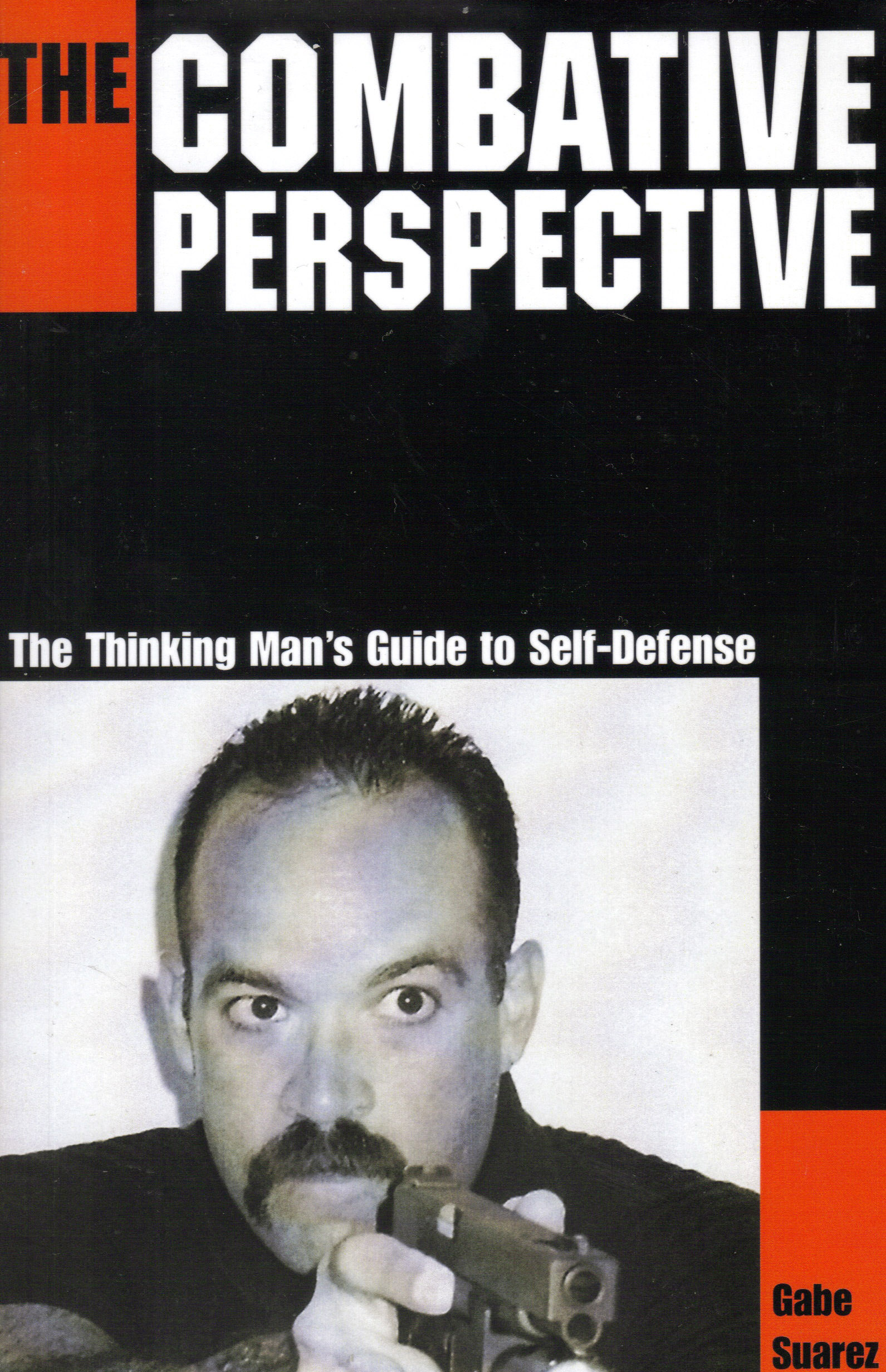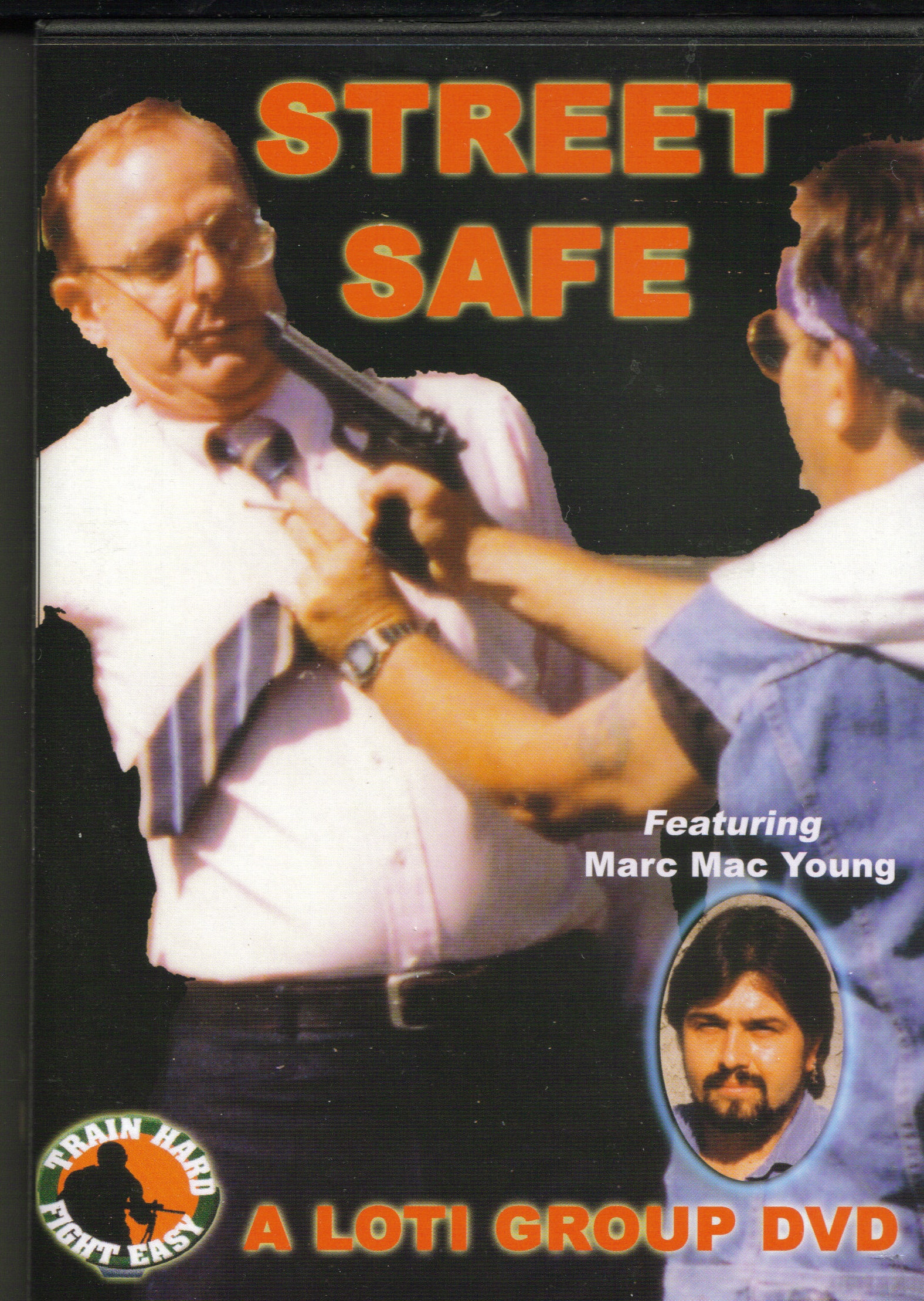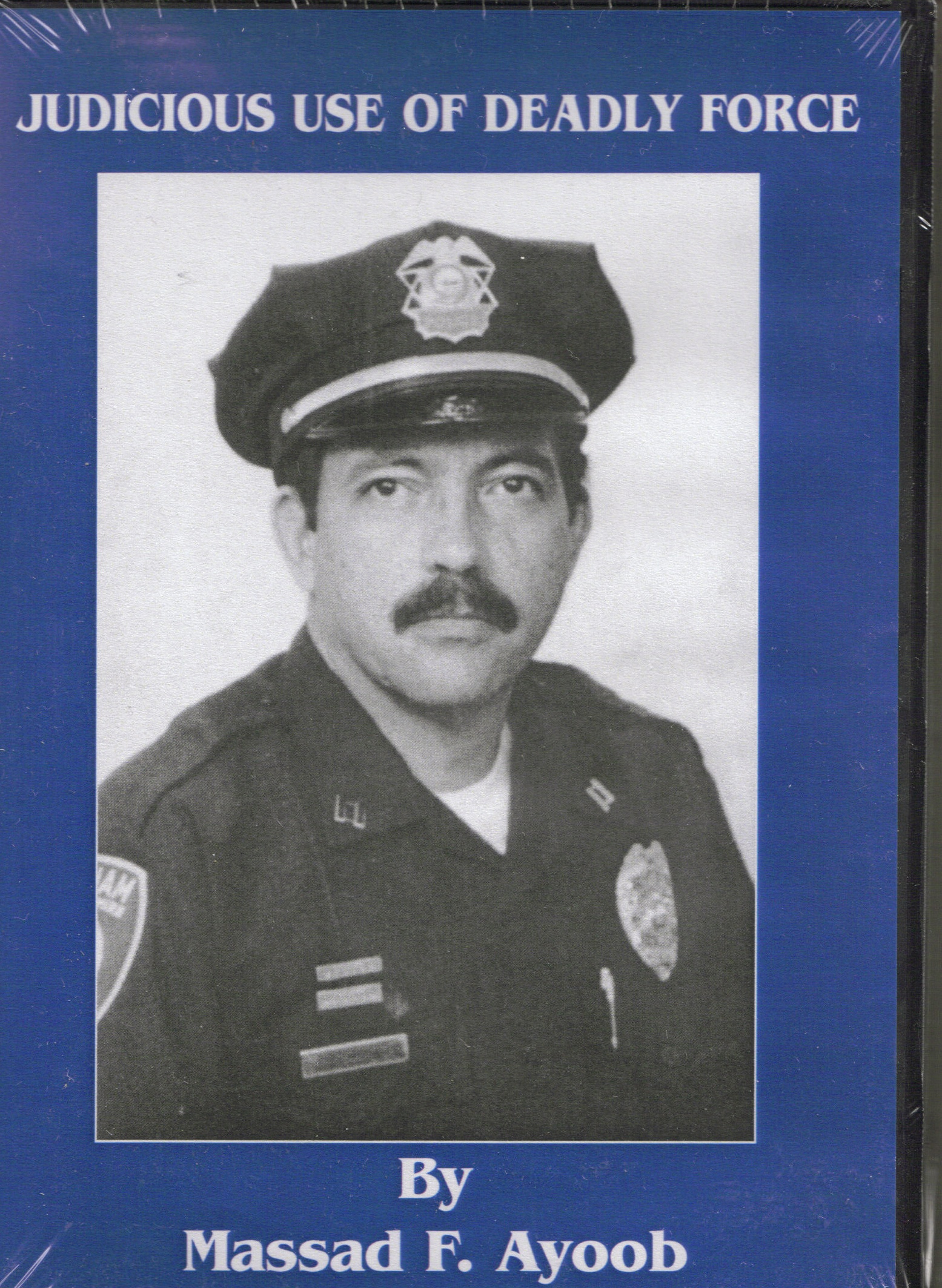Marc MacYoung?
Dianna Gordon MacYoung?
Animal E-list
Crime Avoidance Lectures
Crime Blog
Colorado Classes
Contact Us
FAQs
Hosting A Seminar
Crime Prevention
Expert Witness
Knife Defense
Law Enforcement
Martial Arts
Military
Movie Consulting
Women's Self-Defense
Links
Our Linking Policy
On-line Store
Train with MacYoung
Testimonials
Terms of Use
Topics
of Interest
If you've never seen an elephant
it's easy to imagine yourself
swinging it around by the tail.
Oliver Bingham
Having What It Takes To Survive
On this page:
How Fast You Went There |
How Fast You Recognize What's Happening |
How Prepared You Are
In another section we likened high risk behavior to walking on ice. While it is something that you can do, you can't do it like you do normally. At least not safely. That analogy about walking on ice vs. how you normally walk conveys some very important ideas about what it is going to take for you to survive a dangerous situation.
That's because attempting to apply how you normally function to a dangerous situation is perhaps the greatest obstacle to one's safety.
It is however:
A) One of the most common ways people get into trouble
B) An underlying assumption of a great deal of martial
arts/Self-Defense
training
C) A big reason why seemingly big, strong and confident
people freeze (or
backpedal) when serious
violence occurs(1)
Putting it mildly, it doesn't matter how you do things normally. When thing get ugly, if you want to be the one who walks through your door that night, you must adapt your behavior to those new circumstances. Because the circumstances aren't going to adapt to what you want them to be.
Being uncomfortably honest, a lot of your ability to
save yourself is based on three factors.
One is how fast you dove into a situation that was high
risk. Two is how fast you
recognize what is
actually going on. Three is
how prepared you are to do what must be done.
How Fast You Put Yourself There
How hard, fast and willfully you put yourself into a
dangerous situation has a lot to do with what is going
to happen. Face it, if you walk into a biker bar alone
and scream that you're going to kick their collective
asses, there really isn't to much hope for you.
While that is an extreme example, a great number of people get a very big thrill out of associating with dangerous people. Dangerous people are dangerous for a reason(1). It's all fun and games until that 'danger' is pointed at them. Unfortunately, by the time this happens they're in way over their heads.
If you've gone out of your way to put yourself in and among dangerous people (for whatever reason) and you are still relying on the social conventions that normally protect you to keep you safe, you're out of your league. The problem is that most people do not understand the nature of social prohibitions
But another way that you can dive headfirst into danger is not having control over your emotions with the wrong person. While there are always consequences of letting one's emotions run things, some consequences are worse than others. There are certain people that you cannot act a certain way around. If you insist on your right to do so they will hand you an attitude adjustment right then and there. If you're lucky, it will just be a beating. You may be able to behave that way where you are from, but where he is from that behavior doesn't fly.
How Fast You Recognize What
Is Going On
This is probably the most important attribute that you
can have. It's called 'situational awareness' and it's a
whole lot rarer commodity than people think it is. The
average office worker can see a couple of unsavory types
loitering in a parking lot and make a whim decision
-- instead of turning back -- to continue to his or her
car. This decision is made based on the assumption of
"they'll leave me alone" when in fact, those aren't just
lowlifes, those are
muggers in a
strategic position
waiting to attack someone.
To that person, it will just look like the gun in his/her face just came out of nowhere. When in fact, an extremely dangerous situation already existed and he/she willfully walked into it rather than being inconvenienced. We say willfully rather than unwittingly, because while that person didn't recognize the signals the robbers were broadcasting by their actions. The 'victim' saw them in that strategic location. What's more, a part of him/her did know something wasn't kosher. But that person didn't want to invest the time and effort into either going back or investigating what was wrong with the situation. This is why we say it was a willful decision. The decision to proceed was based on that person's convenience -- not because the person didn't know something was wrong. The fact that the decision had unintended consequences, does not mean it wasn't an intentional decision.
On the other hand, a person who knows such danger signals will walk into that same parking lot, recognize the situation for what it is and reshuffle his/her priorities accordingly (hopefully walking back where they came from and calling the police). The recognition of the situation will usually prevent it from happening.
Being Prepared
The third element is often very hard to define --
especially to those who don't have it. that is how
prepared are you to do what must be done. This is a two
pronged problem:
A) Does the person have the willingness to
act?
B) Does the person have the resources to
carry out that decision?
In our Women's Self-Defense courses, we ask the participants a question: Are you willing to commit physical violence in self-defense, yes or no? Even with it phrased in those black and white terms, there is usually a great deal of waffling, hesitation, discomfort and "Well, it depends"
We'll be the first to agree that there are all kinds of qualifiers about when one should and shouldn't use force. And we're also extremely big on the fact that violence comes in many different levels. But, we're not talking about fighting or overt aggression. The question itself assumes that it is a self-defense, therefore violence is being offered to you. You have a choice, defend yourself or get hurt.
That is how the entrenched the idea that 'violence is bad' is in western culture. Even when only intellectually faced with this choice, people still hesitate. There isn't some big nasty hairy guy coming at you, this is a question asked in the safety and security of the class room. And yet discomfort and uncertainty cause people to vacillate while desperately trying to find an alternative solution.
Well, now for the not-so-nice news. When a situation has gone beyond the norm and it is time to apply force, you cannot hesitate.
Upon hearing this concept, many people misunderstand. They tend to think of a lack of hesitation in terms of cold-bloodedness or anger. While that may be the motivation for the attack, that's not what we are talking about. Putting the lack of hesitation in defensive terms:
You must have the 'willingness' to act in the time frame that you have.
Again, this is a multi-pronged issue:
A) You only have so much time to enact an
effective response.
This doesn't just mean the time it takes to do it. It
also includes
the time it will take for a response to take effect.
Even lethal
force takes time to manifest. You too can be killed in
the "Dead
Man's Ten"(2).
There is a time lag between between what you
do and the attack stopping. Hesitation robs you of
time you
cannot afford to lose.
B) The reason that
it is time to apply force is the
immediate danger
posed by the
circumstances has removed all other options.
This is what is so overwhelming to most civilized
people. We
normally lead lives that avoid such extremes. As such,
when
faced with a problem we are accustomed to having the
time and
ability to research, consider and select viable
alternatives. We're
not accustomed to functioning in such black and white
terms.
Nor are we accustomed to acting on such grave matters in
so
little time -- and with, apparently, so little
consideration. But
being
attacked leaves you no other options but to
be hurt or
stop that danger by similar means.
C) While it is difficult to explain
the
emotional tidal wave of facing an
physical attack, if you do not override your
brain's adrenal function
in a
crisis by this act of "will' -- odds are -- you will
freeze.
Your will tells your body what to do. Without your
will's direction,
your body will not move -- not even to escape.
Like a woman
about to get killed in a bad 1960s horror movie, you
will stand
there frozen as danger approaches (Yes, the one that
everyone
in the room yells at the TV for her to run). In truth
though, the
confusion, disbelief and uncertainty of being
unexpectedly
attacked cannot be overstated. People do freeze
like deer in
headlights when attacked. It happens all the time. While
the
intellectual predetermination to act defensively can
help, you
still have to force your body to act in time. And
that is where
'will' comes in, it lessens the freeze time.
While the decision to use force or not is a personal one. It must be made before you ever find yourself in a situation where you must act on that decision. And our advice to you is if you choose not to, then do yourself a favor and avoid lifestyles and situations where violence is on the list of options.
If, on the other hand,you decide 'yes, you do have the willingness,' then there comes the issue of having the ability to enact your will.
Realize a man in a wheelchair who has both the willingness to shoot and a loaded gun, is more dangerous than a healthy man with a gun, but who lacks the will. That armed man in a wheelchair is also more dangerous to a healthy man who means him harm than the other way around. The ability without the will, is just as ineffective as the will without the ability.
And that takes us into the realm of self-defense (or in the case of professionals, defensive tactics).

1) By this we don't mean the threat of violence. Nor are we talking about a threat display that escalates into physical. Nor are we talking about a fight that they start. We're talking about how seemingly rough, tough people so often fall apart when 'hell come's a'knockin'" This is what separates the meateaters from the bullies and the huffer & puffers. Return to Text
2) Supposedly among Old West gunfighters there was the knowledge of the delay between when someone was shot and when his ability to offer threat was nullified. The term Dead Man's Ten refers to the ten seconds that a fatally shot person could still remain on his feet and still keep on shooting. During those ten seconds, you too could be fatally wounded. Return to Text

The Bulletproof Mind
Learn More >
Order Now!

Violence, Blunders And Fractured Jaws: Advanced
Awareness, Avoidance and Street Etiquette
Learn More >
Order Now!

The Combat Perspective: A Thinking Man's Guide
to
Self-Defense
Learn More >
Order Now!

The Deadliest Men
Learn More >
Order Now!

CQB Clearing Tactics For First Responders/ Patrol Tactics for 911 Officer
Learn More >
Order Now!

Street Safe: How to Recognize
and Avoid Violent Crime
Learn More >
Order Now!

Real World Self-Defense
Learn More >
Order Now!

Warriors: On Living with Courage, Discipline and Honor
Learn More >
Order Now!

Psycho-Physiological Effects of Violent Encounters
Learn More >
Order
Now!

The Missing Link: Self-Protection Through Awareness,
Avoidance and De-Escalation
Learn More >
Order Now!

Deadly Force Encounters
Learn More >
Order Now!

Judicious
Use of Deadly Force
Learn More >
Order Now!
| About navigating this site | Animal List | Bibliography | Bullies | Burglary while on vacation | Classes in Colorado | Car Jacking | Children and Martial Arts | Child Safety | Criminal Mindset | Cults in MA/SD | De-Escalation | E-mail Dianna | E-mail Marc| FAQs | Have MacYoung speak about crime avoidance | Home Page | Home Defense | Hosting a Seminar | Fear | Five Stages of Crime | Knife Fighting | Legal Issues | LEO/Correctional Officer/EMS | Linking policy | Links | Martial Arts | Photo Gallery | Property Crime | Psychology | Rape | Robbery | Safe Dating | Self-Defense Training | Selling your books/DVDs on NNSD | Seminar Schedule | Stalking/Domestic Violence | Street Fighting | Terms of Use | Testimonials | Train with Marc MacYoung | Who is Dianna Gordon MacYoung? | Who is Marc "Animal" MacYoung? | Victimhood | Workplace Problems | Zero Tolerance | ||
| © 1998-2008 No Nonsense Self-Defense, LLC. All rights reserved. |